MAG-ALCHEMI – Magnetic Anisotropy Grafting by means of Atomic Level CHEMical engineering at film Interfaces
Principal Investigator (PI): Andrea Locatelli
The atomic-scale engineering of the magnetic metamaterials is key to information technology and may lead to significant progress in the architecture and performance of varied devices. In this regard, the combination of magnetic and non-magnetic layers into artificially fabricated heterostacks provides a route to obtain improved functionalities in materials, to be exploited in novel recording media with higher storage density, faster access and lower power consumption.
Indeed, magnetic materials are the focus of the MAG-ALCHEMI project, which aims at developing tools to control thin-film magnetism via interfacial engineering. Specifically, the project’s goal is to devise novel means to tune the magnetic state of the matter by appropriately modifying the interface chemistry. During its course, the project will address model systems of increasing complexity, starting from simple ferromagnetic layers combined with heavy metals and 2D materials like graphene. These systems will allow us to observe several intriguing magnetic structures, for instance chiral domain walls and skyrmions, which will be studied in detail to obtain a better understanding of the so-called Dzyaloshinskii-Moriya interaction. Eventually, the research group will focus on complex layered structures comprising ferromagnetic, antiferromagnetic and non-magnetic blocks, where it will try to tailor the exchange coupling and exchange bias interactions. The capability to locally control the magnetic state will be a must throughout the project, which will be pursued with lithographic methods employing focused beams of photons, electrons or ions.
The objectives of the project will be tackled in synergy by four collaborating research groups based in Trieste and Krakow. These groups have overlapping scientific interests and complementary expertise. The group operating at the Nanospectroscopy beamline in Trieste focuses its activity on thin films, 2D materials and surfaces, which are mainly investigated using cathode lens spectro-microscopy. The other three groups are based in Krakow, at the Polish CERIC facility SOLARIS, at the AGH University of Science and Technology, and at Jerzy Haber Institute of Catalysis and Surface Chemistry. The Krakow groups bring a vast expertise and know-how in many research fields related to magnetism, surface science and catalysis.
The planned experiments will be carried out using a multi-technique experimental approach combining microscopic methods with structural, chemical and magnetic sensitivity. To meet the challenge of the experiments, the microscope set-ups in Trieste (Nanospectroscopy) and Krakow (PEEM-XAS) will be upgraded, enhancing the capability to perform in-situ manipulation of the magnetic state and time-resolved studies. Ancillary methods such as MOKE will be implemented and integrated in the facilities.
Scientific field(s) and main challenges of the project
MAG-ALCHEMI aims at developing new concepts to control magnetism in layered structures relevant to basic and applied research in physics. The engineering of these materials is a major challenge, due to the complexity and elusive nature of interfacial interactions. The imaging of the magnetic state in tiny nanostructures poses problems owing to the need of high lateral and time resolution.
Contacts
Andrea Locatelli, tel: +39 349 8425123 / +39 335 1272665 / +39 040 375 8308 / +39 040 375 8703
Tevfik Onur Menteş, tel: +39 040 375 8685 / +39 040-375-8308
Publications
- Tailorable exchange bias and memory of frozen antiferromagnetic spins in epitaxial CoO (1 1 1)/Fe (1 1 0) bilayers
Ślęzak M., Dróżdż P., Janus W., Szpytma M., Nayyef H., Kozioł-Rachwał A., Zając, & Ślęzak, T., Journal of Magnetism and Magnetic Materials, 2022, DOI. - Controllable magnetic anisotropy and spin orientation of a prototypical easy-plane antiferromagnet on a ferromagnetic support
Ślęzak M., Nayyef H., Dróżdż P., Janus W., Kozioł-Rachwał A., Szpytma M., Zając M., Menteş T. O., Genuzio F., Locatelli A., & Ślęzak T., Physical Review B, 2021, DOI - A UHV MOKE magnetometer complementing XMCD-PEEM at the Elettra Synchrotron Genuzio F., Giela T., Lucian M., Mentes T.O., Brondin C.A., Cautero G., Mazalski P., Bonetti S., Korecki J. & Locatelli A., J. Synchrotron Rad., 2021, DOI.
- Spin reorientation transition in an ultrathin Fe film on W (110) induced by Dzyaloshinsky-Moriya interactions
Nagyfalusi B., Udvardi L., Szunyogh L., & Rózsa L., Physical Review B, 2020, DOI. - Magnetic Anisotropy and Temperature Dependence of Exchange Bias in Epitaxial CoO (111)/Fe (110) Bilayers
Ślęzak M., Dróżdż P., Kozioł-Rachwał A., Matlak K., Korecki J., Zając M., & Ślęzak T., Acta Physica Polonica A, 2020, DOI. - Tunable coupling by means of oxygen intercalation and removal at the strongly interacting graphene/cobalt interface Jugovac M., Genuzio F., Menteş T.O., Locatelli A., Zamborlini G., Feyer V., Schneider C.M., Carbon, Vol. 163, 2020, DOI.
- Fine tuning of ferromagnet/antiferromagnet interface magnetic anisotropy for field-free switching of antiferromagnetic spins Ślęzak M., Dróżdż P., Janus W., Nayyef H., Kozioł-Rachwał A., Szpytma M., Zając M., Menteş T. O., Genuzio F., Locatelli A., Ślęzak T., Nanoscale, 2020, DOI.
- Chemistry-dependent magnetic properties at the FeNi oxide–metal interface Genuzio F., Menteş T.O., Freindl K., Spiridis N., Korecki J., Locatelli A., J. Mater. Chem. C, 2020, DOI.
- How a ferromagnet drives an antiferromagnet in exchange biased CoO/Fe(110) bilayers; Ślęzak M., Ślęzak T., Dróżdż P., Matlak B., Matlak K., Kozioł-Rachwał A., Zając M. and Korecki J., Scientific Reports 9, 2019, DOI.
- Oscillating magnetic anisotropy in epitaxial Au/Fe (1 1 0) and Co/Au/Fe (1 1 0) films
Ślęzak M., Dróżdż P., Matlak K., Kozioł-Rachwał A., Korecki J., & Ślęzak T., Journal of Magnetism and Magnetic Materials, 2019, DOI. - Ion irradiation driven changes of magnetic anisotropy in ultrathin Co films sandwiched between Au or Pt covers; Mazalski P., Kurant Z., Sveklo I., Dobrogowski W., Fassbender J., Wawro A., Maziewski A., Journal of Magnetism and Magnetic Materials, 2019, DOI.
- Role of carbon dissolution and recondensation in graphene epitaxial alignment on cobalt;
Jugovac M., Genuzio F., Lazo E.G., Stojic N., Zamborlini G., Feyer V., Menteş T.O., Locatelli A., Schneider C.M., Carbon, 2019, DOI. - Stimulated CO Dissociation and Surface Graphitization by Micro-Focused X-ray and Electron Beams; Genuzio F., Genoni P., Menteş T.O., Santos B., Sala A., Lenardi C., Locatelli A., J. Phys. Chem. C, 2019, DOI.
- Magnetization reversal and domain nucleation in ultra-thin Co/Re(0001) capped by graphitic C, Genuzio F., Menteş T.O., Locatelli A., IEEE Transactions on Magnetics, 2019, DOI.
- Magnetic Patterning by Electron Beam-Assisted Carbon Lithography, Genoni P., Genuzio F., Menteş T.O., Santos B., Sala A., ACS – Applied Materials and Interfaces, 2018, DOI.
- Adsorption induced modification of in-plane magnetic anisotropy in epitaxial Co and Fe/Co films on Fe(110), Ślȩzak M., Ślȩzak T., Matlak K., Drózdz P., and Korecki J., AIP Advances, 2018, DOI.
Research Group
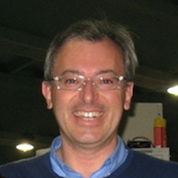
1988 – 1994 – First degree in Physics, “Laurea in Fisica” at the University of Trieste, Italy
1996 – 2000 – Ph.D. in Physical Chemistry, University of Cambridge, Pembroke College, UK
05/2000 – 03/2002 – Postdoc at Elettra
03/2002 – 05/2005 – Beamline scientist at Elettra
05/2005 – present – Coordinator of the “Nanospectroscopy” beamline at Elettra
06/2006 – present – First researcher at Elettra
10/2019 – present – Coordinator of the Spectroscopy, Photoemission and Dynamics group at Elettra
Brief research profile
Expertise: Surface science and catalysis, surface chemical reactions, surface magnetism, thin-film magnetism, ultra-thin film growth on metal and oxide supports, graphene and 2D materials and their electronic structure, self-organization processes in ultra-thin films. Surfaces and interfaces, nanostructures. Synchrotron radiation, synchrotron radiation spectro-microscopy and in particular X-ray photoemission electron microscopy (XPEEM, XMC/LD -PEEM). Dynamic phenomena at surfaces studied by low energy electron microscopy (LEEM); structural characterization by means of microprobe low energy electron diffraction (LEED).
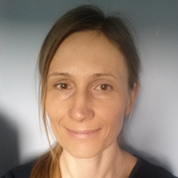
1997 – MsC. in Material Engineering, AGH – University of Science and Technology, Cracow, Poland
1999-2002 – Research Fellow at national Institute for Matter Physics, Trieste
2005 – Ph.D. in Physics, Faculty of Physics and Applied Computer Science, AGH – University of Science and Technology, Cracow, Poland
2005 – Present – Researcher at Jerzy Haber Institute of Catalysis and Surface Chemistry, Polish Academy of Sciences, Cracow, Poland
Brief research profile
Expertise: Thin film and surface nanostructures fabrication and characterization by Photoemission Electron Microscopy and Low Energy Electron Microscopy.
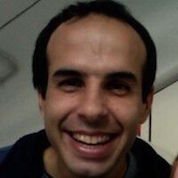
1996 – Bachelor in Physics
1996 – Bachelor in Electronics Engineering
2003 – Ph.D. in Physics
2004-2009 – Postdoctoral researcher at Elettra – Sincrotrone Trieste, Italy
2009-Present – Beamline scientist at the Nanospectroscopy beamline at Elettra – Sincrotrone Trieste, Italy
Brief research profile
Surface structure and magnetism; thin film growth and self-organization on surfaces; surface elasticity; metal alloys; surface chemistry; x-ray interactions with matter; x-ray photoemission (XPEEM) and low-energy electron microscopy (LEEM).
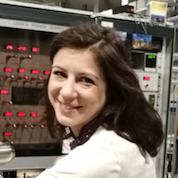 ]
]
2010 MsC. in Physics at Padova University
2011-2016 – Ph.D. student affiliated with the Fritz Haber Institut der MPG at PGM9 beamline at Bessy II, Berlin, Germany
2016 – Ph.D. in Physics at the Humboldt University Berlin
2005-2006 – Beamline supporting scientist and at the student at the Fritz Haber Institut der MPG, Berlin, Germany
2016-Present – Researcher at the Elettra Nanospectroscopy beamline, Trieste, Italy
Brief research profile
Expertise: Surface science, thin film heterostructures fabrication and characterization, with main application to catalysis and magnetic anisotropy studies; LEEM, X-PEEM, electron optics and related synchrotron based experimental techniques.
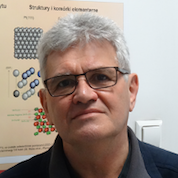
1971 – MsC in Physics, Jagiellonian University, Krakow, Poland
1980 – PhD in solid state physics, AGH, Krakow, Poland
1991 – Dr. hab. in physics, Jagiellonian University
1971-Present – AGH University of Science and Technology (since 1999 full professor)
1983-1986 – Visiting scientist at TU Clausthal, Germany
1989-1990 – Visiting scientist at CEA Grenoble, France
1996 – Visiting scientist at IKS Leuven, Belgium
1999-Present – Institute of Catalysis and Surface Chemistry, PAS, Krakow, Poland
Brief research profile
Expertise: Physics of metal and oxide nanostuctures, Nanoscale magnetism, Conversion Electron Mossbauer Spectroscopy (CEMS).
Publications and Dissemination: 140 articles in reviewed journals, 3 invited reviews and articles, Over 100 invited talks and plenary lectures at International Congresses, Conferences, Symposia, Workshops etc. H-index 33 (SCOPUS)
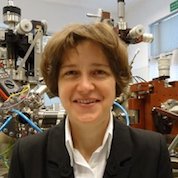
1997 – MSc in Physics
2013 PhD in Physics
2004-Present – Physicist in Jerzy Haber Institute of Catalysis and Surface Chemistry, Polish Academy of Sciences, Kraków
Brief research profile
Expertise: Samples preparation by Molecular Beam Epitaxy; surface characterization by Low Energy Electron Diffraction, Auger Electron Spectroscopy, Scanning Tunneling Microscopy; magnetic properties characterization by Mössbauer spectroscopy and Nuclear Resonant Scattering of synchrotron radiation.
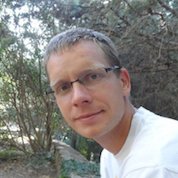
2004-MsC. AGH, Faculty of Electrical Engineering, Automatics, Computer Science and Electronics
2004-2009 – Ph.D. in Physics, AGH, Kraków
2009-2013 – Post-doc in the Nanostructures and Surfaces group at the AGH University of Science and Technology, Project AMON – operated within the Foundation for Polish Science Team Programme
2013-2014 – SCIEX Post-doc in Swiss Light Source (Pollux/NanoXAS beamline), Villigen, Switzerland
2014-Present – Researcher at the AGH University of Science and Technology, Kraków, Poland
Brief research profile
Expertise: Magnetism of epitaxial thin films, nanostructures and surfaces/interfaces; Magnetic Anisotropy and Exchange Bias in thin films and nanostructures; Magnetooptic Kerr Effect measurements, X-PEEM and LEEM microscopy, simulations and modelling of magnetic anisotropy in thin films.
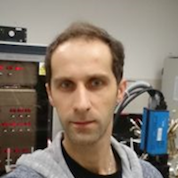
2006 – MSc – in Physics at Faculty of Physics at University of Bialystok, Poland
2006-Present – Academic teacher and researcher at Faculty of Physics at University of Bialystok, Poland
2013 – Ph.D. in Physics at Faculty of Physics at University of Bialystok, Poland
2013-2016 – Post Doc for the TEAM project at Faculty of Physics at University of Bialystok, Poland
2015-Present – PostDoc for the FUGA project (financed by National Science Center) at Jerzy Haber Institute of Catalysis and Surface Chemistry Polish Academy of Sciences and SOLARIS National Synchrotron Radiation Centre in Krakow, Poland
2017-Present – Researcher MAG-ALCHEMI CERIC-ERIC project
2018 – researcher for the Beethoven project (financed by National Science Center) at Jerzy Haber Institute of Catalysis and Surface Chemistry Polish Academy of Sciences and SOLARIS National Synchrotron Radiation Centre in Krakow, Poland
Brief research profile
Expertise: Magnetic ultrathin films fabrication; magnetic ultrathin film structuration and modifications by e.g. ions, light; analysis of the magnetic and structural properties by: magneto-optical techniques (magnetometry and microscopy), SPM techniques (AFM, MFM), synchrotron techniques (XMCD, PEEM), SEM, XRD, XRR
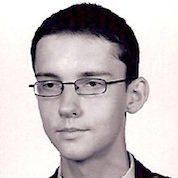
2010 – MsC. in Material Engineering
2016 – Ph.D. in Physical Chemistry
2016-2017 – Physicist at AGH University of Science and Technology – permanent delegation to NCPS SOLARIS (Jagiellonian University), Krakow, Poland
2017-Present – Postdoc at CERIC-ERIC
Brief research profile
Expertise: UHV methods dedicated for surface and ultrathin films investigations, cathode lens electron microscopies (Low Energy Electron Microscopy and Photoelectron Electron Microscopy). Acquainted with synchrotron and laboratory based spectroscopies using photoelectrons and secondary electrons.

1995 MsC in physics, Jagiellonian University, Cracow, Poland
1999-2000 – Assistant at the Faculty of Physics and Applied Computer Science, AGH – University of Science and Technology
2000 – Ph.D. in Physics, Faculty of Physics and Applied Computer Science, AGH- University of Science and Technology
2000-2014 – Faculty of Physics and Applied Computer Science, AGH – University of Science and Technology, adjunct
2014 – Habilitation in physics at the Faculty of Physics and Applied Computer Science, AGH- University of Science and Technology
2018-Present – Associate Professor at the Faculty of Physics and Applied Computer Science, AGH- University of Science and Technology
Brief research profile
Structural and magnetic properties of thin films and nanostructures, with focus on exchange biased ferromagnetic – antiferromagnetic (FM-AFM) systems and multilayers with iron-rhodium (FeRh) sublayers displaying temperature driven antiferromagnetic-ferromagnetic (AFM›FM) phase transition. The research goal is to utilize unique transformation of magnetic properties accompanying AFM›FM phase transition of FeRh B2 ordered alloy in tailoring of magnetic properties of bi-layers and multilayers with built-in FeRh sublayers. The magnetic anisotropy, relative sublayer magnetization orientation of these sandwiches can be thermo-programmable via the AFM›FM phase transition in the FeRh sublayers.
Expertise: Nanoscale magnetism, Thin film growth and characterization, Mossbauer Spectroscopy, Nuclear Resonant Scattering of X rays
Detailed CV



